Bereichsnavigation
Central Themes of the Collection
The museum collects instruments of European art music dating from the sixteenth to the twenty-first century. One special focus is early harpsichords and spinets, such as those from the Ruckers family workshop, as well as string instruments made by master instrument makers from Italy and the northern Alpine region, such as Stradivari, Gagliano, Stainer and Krouchdaler. The collection also includes woodwind instruments from Hotteterre, Denner and Quantz, as well as string and wind instruments from workshops in Berlin. Another focus is automatic and electronic musical instruments.
Harpsichords made by the Flemish Ruckers family
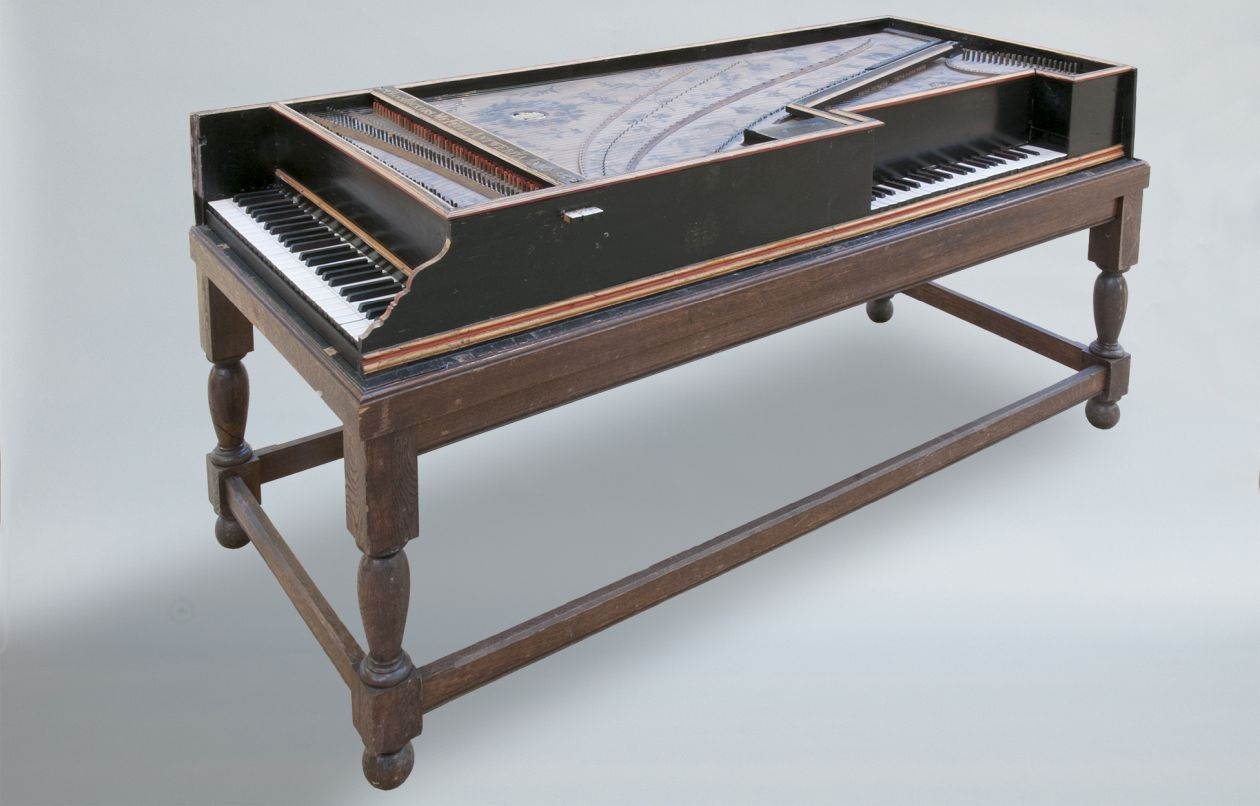
Celebrated for their powerful yet flexible tone and their rich ornamental painting, the Ruckers harpsichords from the first half of the seventeenth century are a delight for both the ear and the eye.
Among the museum's oldest and most valuable keyboard instruments are the four harpsichords made by the Flemish Ruckers family in the first half of the seventeenth century. We also have an instrument made by Hans Ruckers in the year 1594, which is on permanent loan from the Kunstgewerbemuseum SMB (Museum of Decorative Arts of the National Museums in Berlin). The harpsichords from the Ruckers family were built in Antwerp between 1570 and 1660, and they were considered to be among the best. Many instruments were exported to England, France and Germany. They were celebrated for their superb tone, which was powerful and flexible at the same time.
The best-known members of the family are Hans the Elder (1550 to circa 1623) and his sons Joannes, or Hans the Younger (1578–1643), and Andreas the Elder (1579–1654). The museum has two harpsichords from each of the sons. In keeping with the Flemish style of construction, and in contrast to the typical Italian designs, these are comparatively heavy and massive instruments.
Of the four Ruckers harpsichords in our collection, the instrument that is probably the oldest was built in 1618 by Andreas the Elder. On this piece, as on other instruments, the decorative painting on the sides of the case, the area around the keyboard and the inside of the lid emulates wallpaper patterns or wood grains. The soundboard painting depicts flowers, fruit and birds. This, too, is typical of the Flemish harpsichords of this period.
The museum also has a harpsichord built by Joannes Ruckers in approximately 1620. Unusually, the instrument combines a harpsichord and virginal in one case, which was a special invention of the Ruckers family. The inner side of the lid, which is raised when the instrument is played, is adorned with a large and sumptuous painting depicting the conversion of Paul the Apostle. The other two Ruckers harpsichords in our collection, one of which is a two-manual instrument, also have magnificent paintings on their lids: one featuring a view of a town and the other a coastal landscape. These lavish designs indicate how important the harpsichords were not just as musical instruments but as showpieces.
Harpsichord-family instruments and clavichords
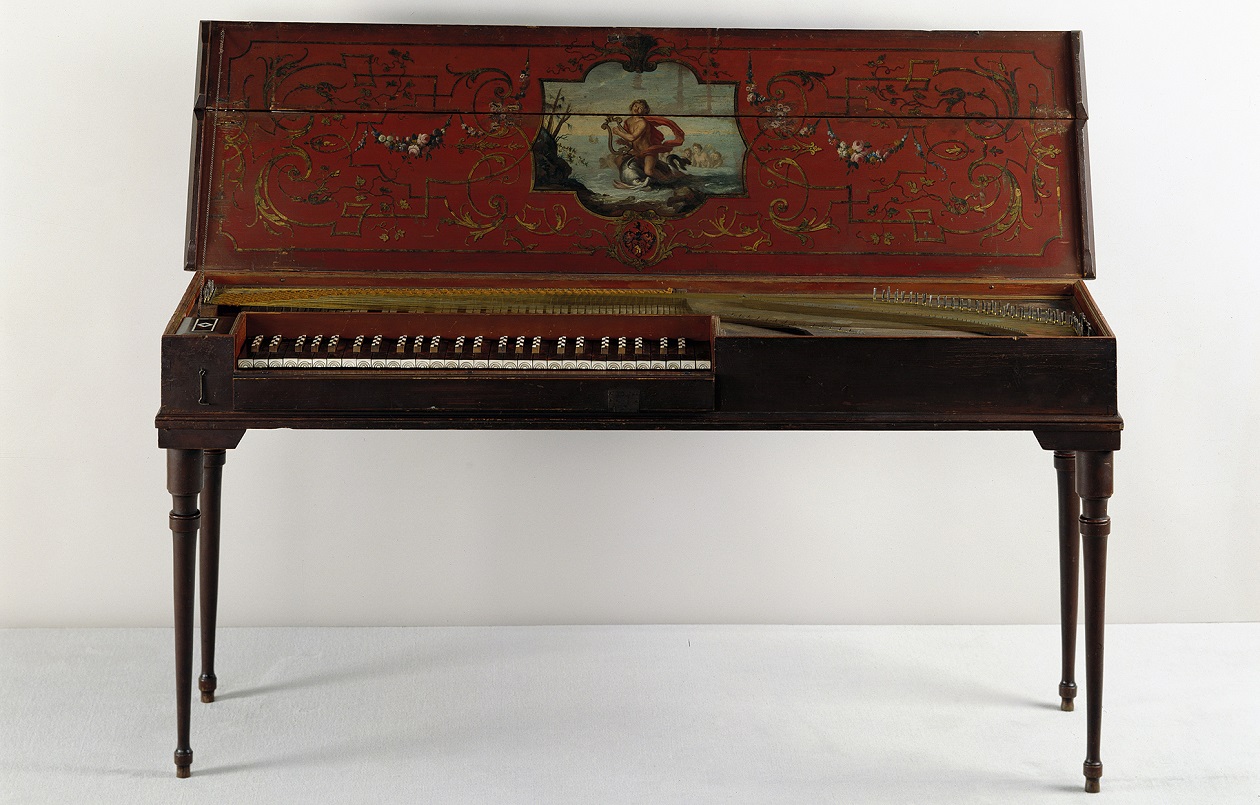
The harpsichord and clavichord, which generated sound in fundamentally different ways, were the two main types of stringed keyboard instruments from the sixteenth to the eighteenth century prior to the invention of the fortepiano.
Historical keyboard instruments are one of the museum's main areas of focus. Evidence of stringed keyboard instruments can be found as far back as the second half of the fourteenth century. Prior to the eighteenth century, these instruments basically used two different ways of generating sound: In instruments like the harpsichord, the strings are plucked with a plectrum, which was originally made from quills. Instruments of this type include the harpsichord, spinet and virginal. In clavichords, the strings are tapped by a metal blade called a “tangent,” causing them to vibrate. In contrast to the action of a harpsichord, however, it is not the whole string that vibrates but only the part of the string to the right of the contact point. The rest of the string to the left of the tangent is damped by a strip of cloth.
Harpsichords and similar instruments have no keystroke dynamics. In other words, the individual notes do not differ in volume, regardless of how forcefully the keys are pressed. When the clavichord is played, on the other hand, the tangent remains in contact with the key as well as the string, so the player can achieve continuous volume modulation through the key velocity, or how hard a key is struck. This even makes it possible to produce a vibrato, which the composers of the eighteenth century called “bebung.” On the whole, however, the clavichord is a very quiet instrument.
It was not until the invention of the fortepiano at the end of the seventeenth century that it was possible to combine keystroke dynamics with fulness of sound. The new possibilities offered by the fortepiano fueled its rapid rise, and it ultimately superseded both the clavichord and the harpsichord.
Baroque wind instruments
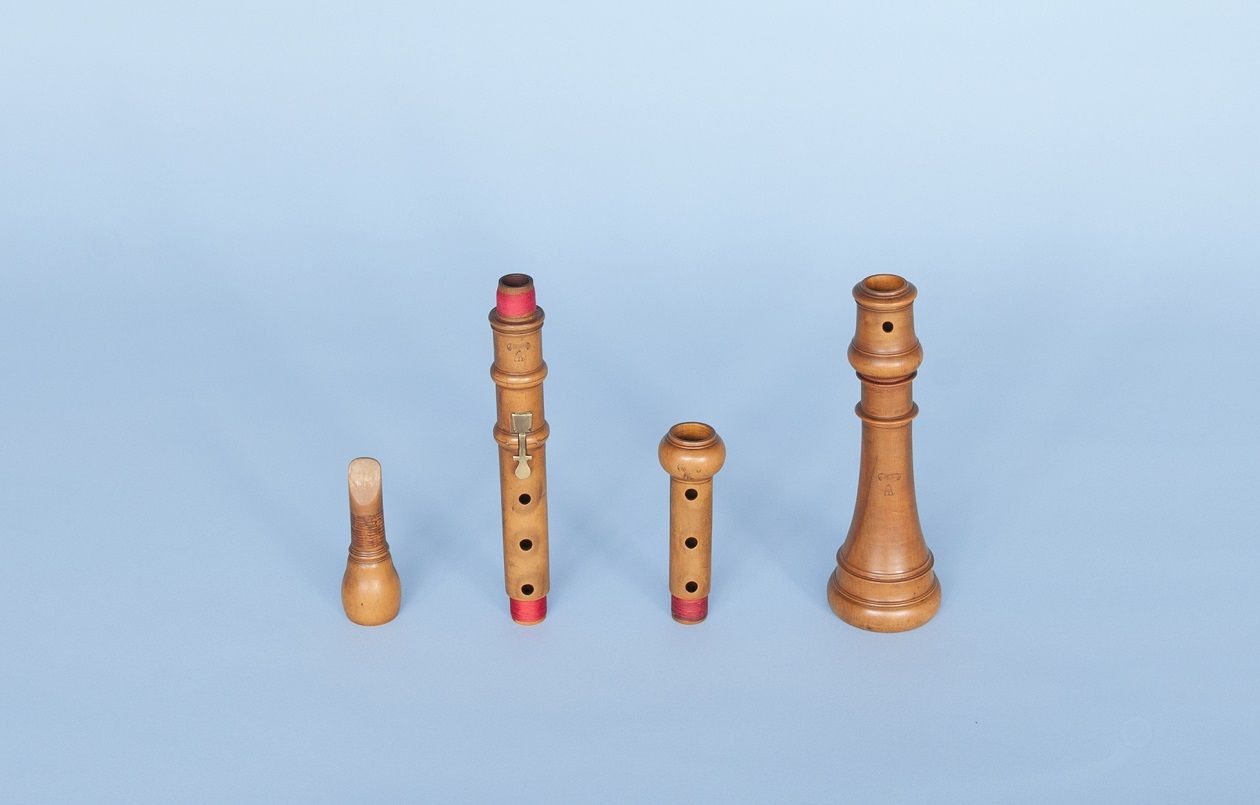
The oboe replaces the bombard: the sound ideal that gained acceptance in the closing years of the seventeenth century is still dominant today.
The instruments used toward the end of the seventeenth century testify to a shift in the quality of sound that was considered ideal, especially in the field of woodwind instruments. Bombards – and, to some extent, recorders – increasingly gave way to oboes and transverse flutes, which allow for a more nuanced style of playing. Like the bombard, the sumptuous oboe from Parisian instrument maker Dupuis, made partially of ivory, still has a fontanelle, which was a decoratively fashioned, barrel-shaped enclosure that protected the keywork. The lavish use of ivory in the design of this instrument suggests that it was played at the French royal chapel. The museum also has a transverse flute made by the famous Hotteterre family, who worked for the French royal court in the late seventeenth and eighteenth centuries and were also involved in the development of the oboe. The instrument is identical in appearance to the one that Jacques-Martin Hotteterre (nicknamed “Le Romain”) is depicted as holding on the title page of his famous handbook on the flute first published in 1707.
The first clarinet was crafted in the Nuremberg workshop of Jakob Denner shortly after 1700. In contrast to the oboe, flute or bassoon, this was not so much an evolved form of an existing instrument as the invention of a new one. As far as the transverse flute was concerned, the keys were uncovered, which gave instrument makers an incentive to apply decorative features. A flute from the French instrument maker Dumont, for example, which was probably built around 1720, is adorned with a delicate floral motif.
Italian master violins
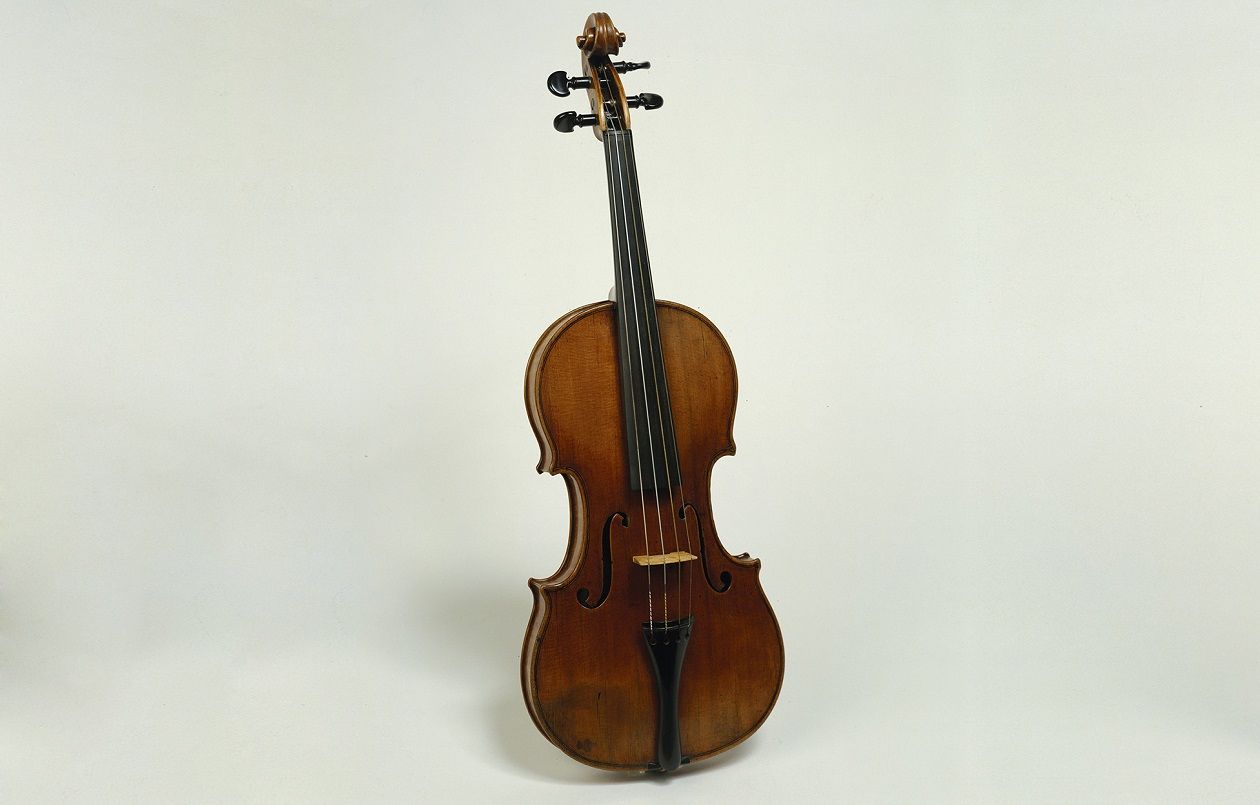
The most illustrious names in violin making come from Cremona: Amati, Guarneri – and of course Antonio Stradivari.
The violin is the soprano instrument of a family of stringed instruments that developed in northern Italy at the beginning of the sixteenth century. By the early to mid-seventeenth century, at the latest, a standard design had emerged, and only minor structural changes have been made to it since then.
For centuries, the most important center of violin making was the northern Italian town of Cremona. The workshops of the famous luthier families Amati, Guarneri and Stradivari were located there. The violins created by the Cremonese masters served as models for violin making throughout Europe, and they have often been a target for forgers. In contrast to archaic designs – such as those found in the Alemannic School of violin making – Cremonese violins were made with a supporting inner mold. In other words, the rib garland or the individual ribs are laid around a prefabricated form-board.
The Musikinstrumenten-Museum has several outstanding examples of Italian violin making. It holds one of the approximately 600 extant Stradivarius violins, for example. Unfortunately, this particular instrument has lost a great deal of its tonal potential as a result of inexpert repairs. But even in its current state, it bears witness to the artful craftmanship of its maker. A different Cremonese violin, this one probably made by the Amati student Francesco Ruggieri, is on permanent loan to the Beethoven Haus in Bonn, because it was a personal possession of Beethoven’s, along with three other string quartet instruments.
An instrument of special historical interest is the violin attributed to the Neapolitan violin maker Gennaro Gagliano. In contrast to almost all historical string instruments, this violin has not been rebuilt over the centuries to accommodate the requirements of modern musicians. It still has its original, non-extended neck, for instance. One conspicuous feature of the body is the reddish-orange varnish that Gagliano used. The sound of this extraordinary instrument can be heard on a CD recorded by Rainer Kussmaul.
Master violins from north of the Alps
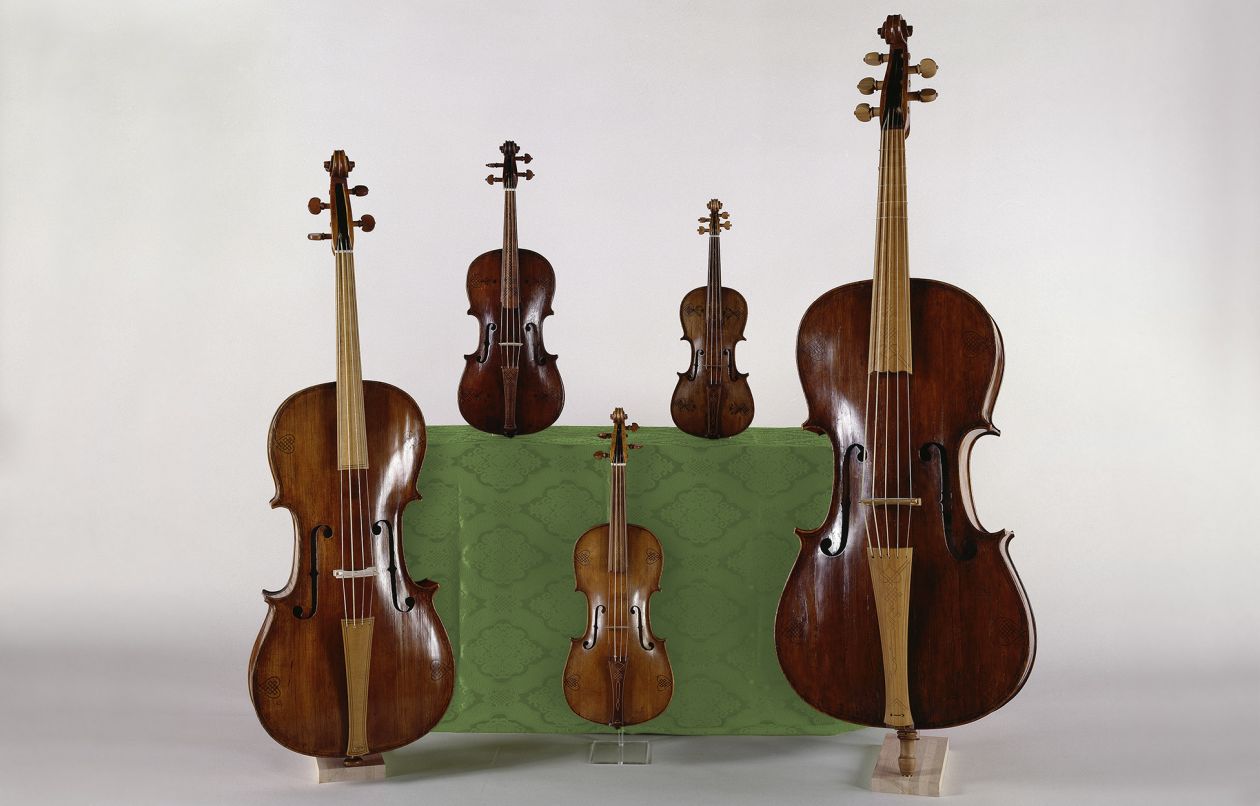
The instruments of Stradivari have not always been considered the non plus ultra. Until around 1800, there were violins from north of the Alps that enjoyed even greater popularity.
String instruments of outstanding quality were produced not just by Italian violin makers but by those from German-speaking areas, too. Until around 1800, the violins made by Jakob Stainer in Absam, near Innsbruck, were even more popular than those of Antonio Stradivari. Mozart, for instance, played an instrument modelled on the Stainer violin. The body of the Stainer is higher and more steeply arched, which encourages a gentler sound. The Musikinstrumenten-Museum has a Stainer violin from the year 1654.
There was also a local but important tradition of violin making known as the Alemannic School, which was prevalent in the southern Black Forest (where the workshops of Joseph Meyer and Frantz Straub were located) and the Bern region of Switzerland (where Hans Krouchdaler had his workshop) in the seventeenth century. The richly ornamented instruments of this school are some of the purest forms of a style of violin making that was practiced from Poland to England and in some cases up until the early twentieth century. In contrast to the violins of the Cremonese masters, these instruments were built without any supporting inner mold; the rib garland was fixed to the floor of the violin without any abutment. The museum is fortunate to have seven instruments and instrument fragments of the Alemannic School – an exceptional resource for researchers. The results of a scholarly study of these instruments have been documented in a seminal publication and an exhibition. The Alemannic violins can also be heard on a CD in the “Klingendes Museum” (Melodious Museum) series.
Instruments of Viennese Classicism
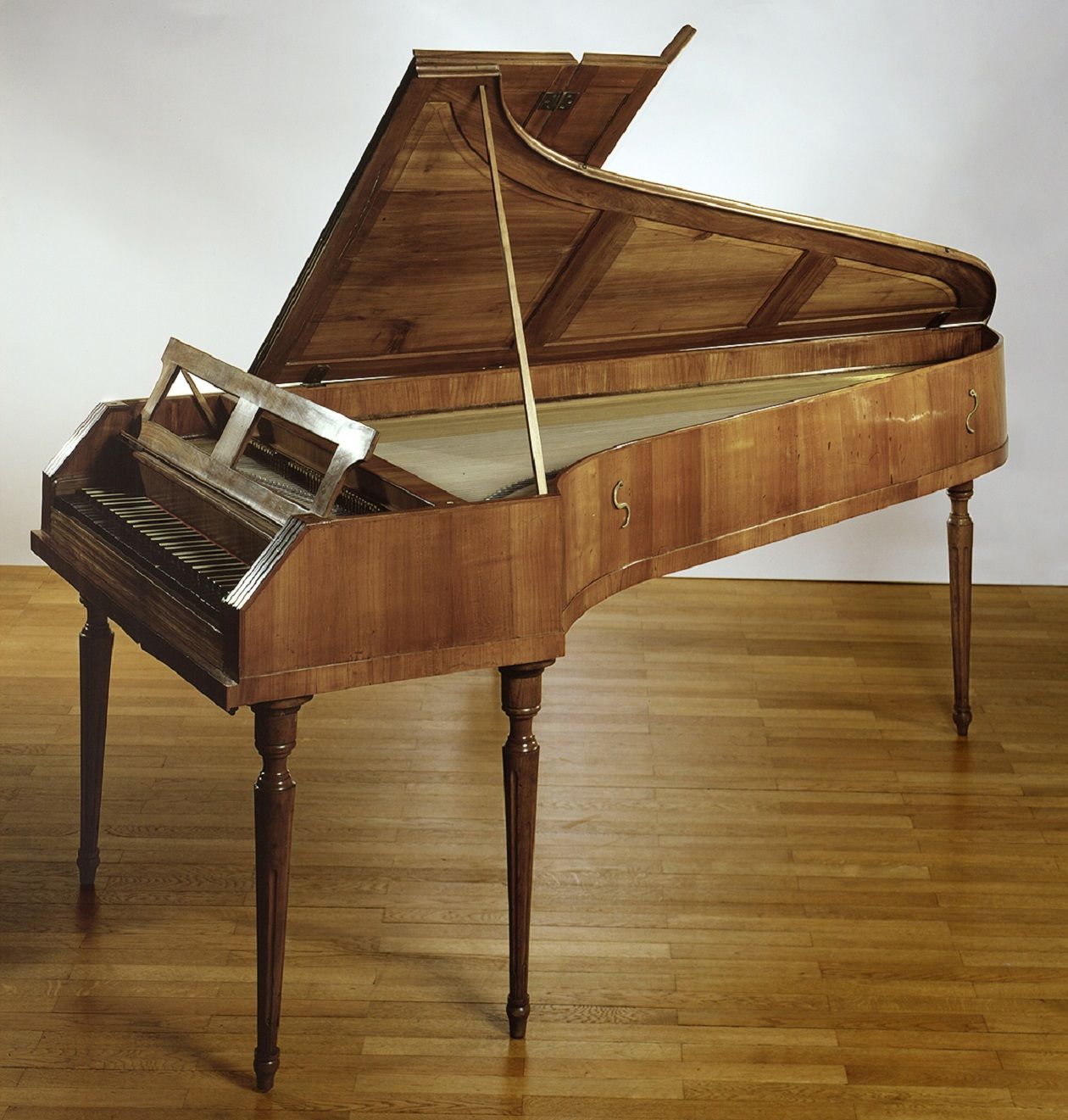
In the days of Haydn and Mozart, instruments like the fortepiano and clarinet came into their own, and they naturally exerted an influence on the music of Viennese Classicism.
During the eighteenth-century reigns of Maria Theresa and Joseph II, Vienna rose to a position of great eminence in the world of music. Instruments that are still in use today first gained broad acceptance in the time of Haydn, Mozart and Beethoven, the triumvirate of Viennese Classicism. The design of the fortepiano in particular underwent a decisive change around 1770, and that in turn had an effect on the piano music composed during this era. A key contributor to this development was Johann Andreas Stein, who set up a workshop in Augsburg in 1751. The great advantage of his instruments derived from a new action (probably developed by Stein himself) called Prellzungenmechanik or “German” action. In contrast to Italian and English action, the head of the hammer, which is often not covered with leather, lies on the key lever. Immediately after striking the string, the hammer falls back to its resting position. This approach was sturdier in terms of design, and it also resulted in a different type of sound: brighter, more penetrating and more immediate. The museum has a Stein piano with a cherrywood veneer from 1775.
The clarinet also became increasingly important, both for orchestras and as a solo instrument. Invented at the beginning of the eighteenth century – and therefore much younger than the oboe – the clarinet is a single-reed instrument with a largely cylindrical bore. One special type of clarinet is the basset horn. This was developed around 1770, probably by someone associated with the clarinetist Anton Stadler, a friend of Mozart. It resembles an alto clarinet with a somewhat rough but nonetheless full-bodied timbre – a consequence of its narrower bore and thinner walls in comparison with a normal clarinet. The basset horn faded in popularity over the course of the nineteenth century and soon became obsolete.
Another instrument that did not outlast Viennese Classicism was the baryton, which had six to seven bowed strings and an additional set of sympathetic strings. The latter ran below the bridge to a bar positioned across the body at a slanted angle, and they could be plucked from the rear, where the back of the neck was left open, by the thumb of the left hand. A typical instrument had nine sympathetic strings, but there were also models with 27 strings and more. The baryton is described as having a very graceful, soft and mellow sound. Between 1766 and 1774 alone, Haydn wrote over 120 baryton trios for his employer, Prince Esterházy.
Instrument making in Berlin
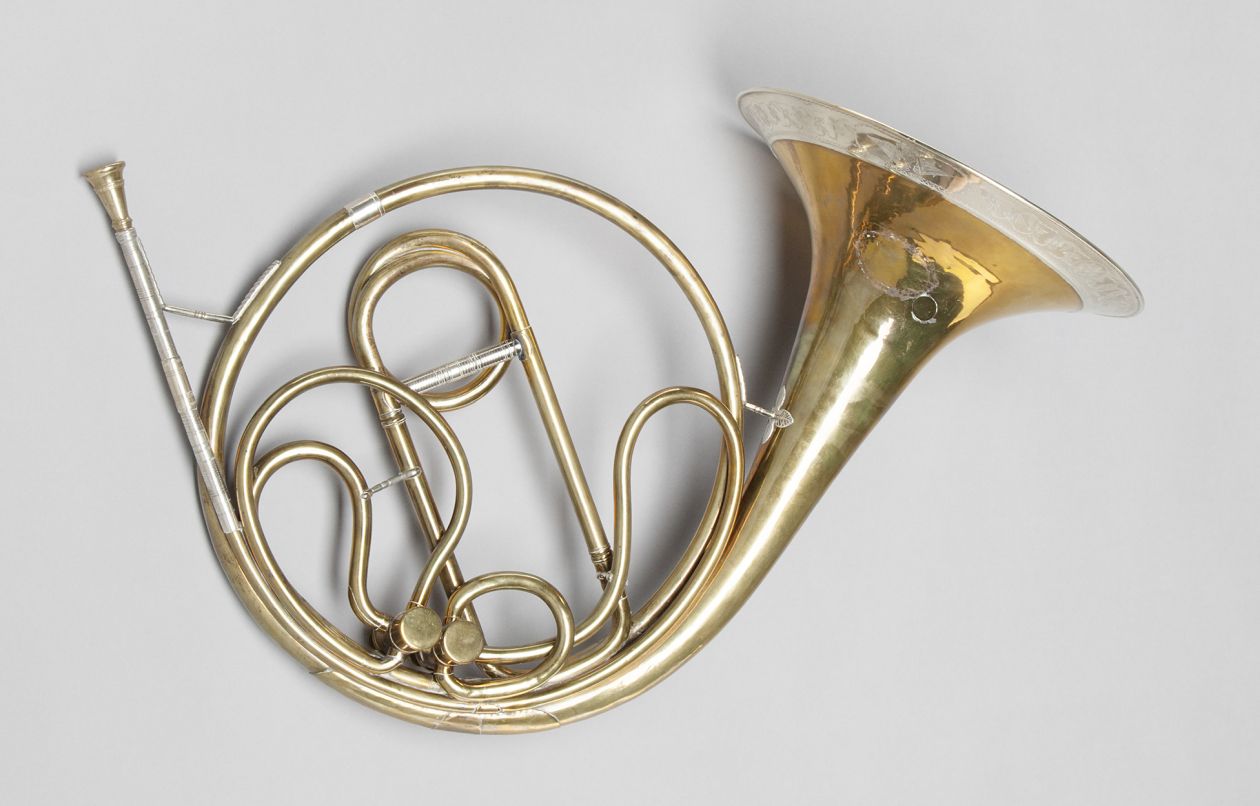
Berlin has a rich and varied tradition as a center of instrument making. It is known for Bechstein upright and grand pianos, Möckel violins and Moritz brass instruments.
The tradition of wind instrument making in Berlin extends back to the time of Frederick II, when many young instrument makers were trained in the Potsdam workshop of Friedrich Gabriel A. Kirst. Two of these young men were J. Conrad Griessling and B. Schlott. In 1808, they founded their own company, which existed until 1842. At first, it manufactured only woodwind instruments. Later on, it made brass instruments as well. At around the same time, Johann Gottfried Moritz set up a workshop in Berlin. Moritz was an instrument maker to the Prussian royal court and an academic artist who improved the valve system of brass instruments in collaboration with his son Carl Wilhelm and the military musician Wilhelm Wieprecht. In 1835, Moritz patented the bass tuba. The instrument was inspired by Wieprecht’s desire to give more weight to the bass register in brass bands. The Moritz company existed until 1955.
One distinctive feature of piano making in Berlin during the Biedermeier age was the production of “lyre pianos” and “giraffe pianos.” Toward the end of the nineteenth and the beginning of the twentieth century, Berlin developed into a major center of piano making and attracted a great many supplier firms. There were many piano-making factories in Berlin, especially in the Kreuzberg district. They were owned by companies such as Wilhelm Biese, Gebr. Schwechten and Theodor Stöcker. For several years now, however, the only remaining manufacturer has been C. Bechstein.
Although there is no uniform Berlin style of violin making, the city has been home to many violin makers (mainly because of the need for repairs), and trade in more or less high-quality violins has flourished here. Probably the most famous violin maker in Berlin was Otto Möckel (1869–1937). Like his brother Max (1873–1937), Otto was a student of his father Oswald Möckel (1843–1912), and in addition to building new violins, performing repairs and trading in instruments, he wrote an important textbook on violin making. Many famous musicians used instruments made by Otto Möckel and even preferred them to those of the Italian masters. The great concert violinist Georg Kulenkampff performed on a Möckel violin, even though he also owned a Stradivarius.
Renaissance in harpsichord making
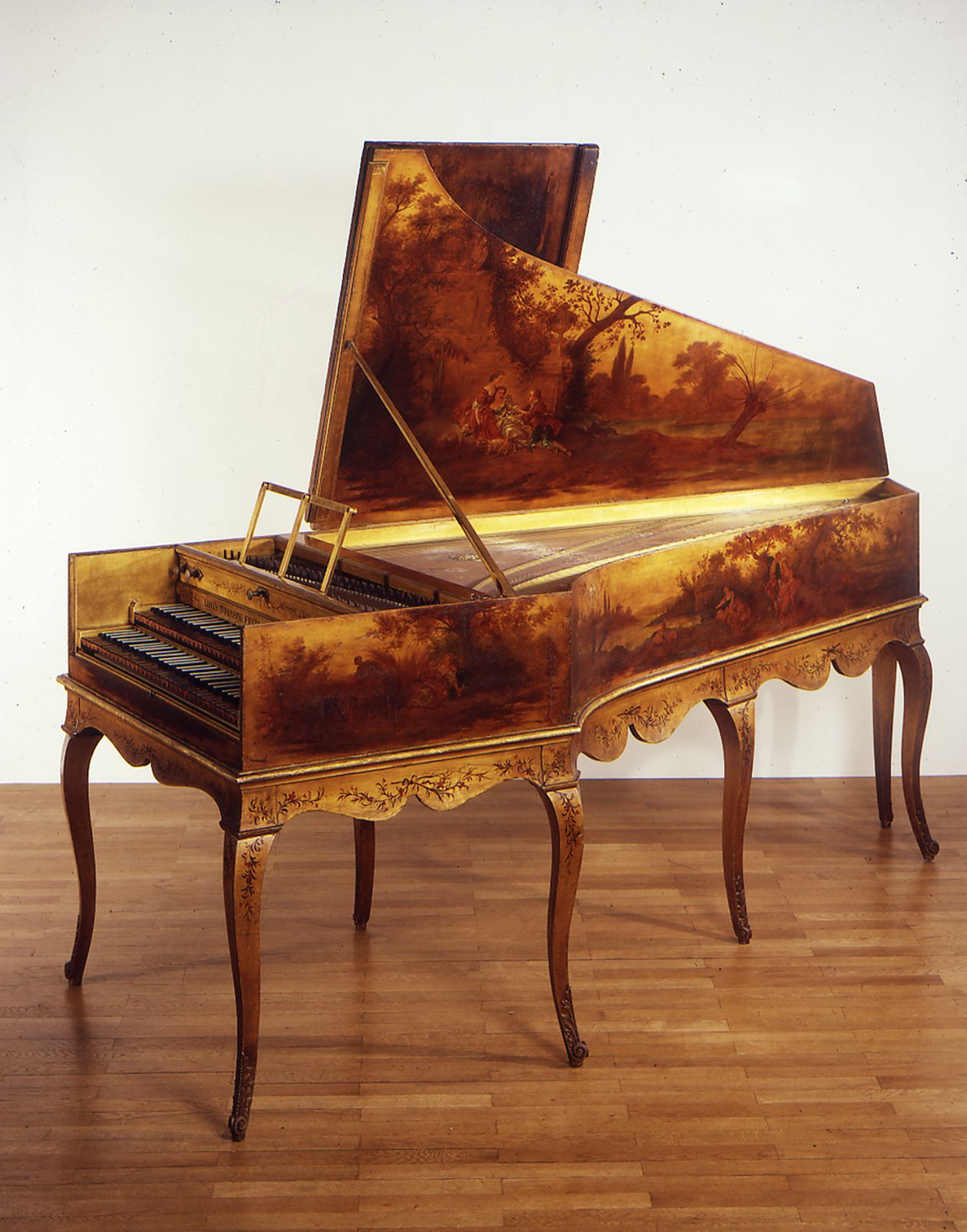
While most visitors to the 1889 World Fair marveled at the Eiffel Tower, music experts were equally entranced by three newly designed harpsichords from Parisian workshops.
The late nineteenth century saw a revival in harpsichord building, thanks in part to the encouragement of composers like piano virtuoso Louis Diémer. Three new harpsichords were exhibited at the Paris World’s Fair in 1889. Two of them were made by the largest French piano manufacturers, Érard and Pleyel; the third was from the restorer Louis Tomasini. These instruments combined the body and sound characteristics of the historical harpsichord with features of contemporary piano making, such as the practice of leaving the body open at the bottom and using a cast-iron frame. In the 1960s, after years of detective work, the Musikinstrumenten-Museum acquired all three harpsichords exhibited at the 1889 World Fair.
Toward the end of the nineteenth century, the modern harpsichords attracted considerable attention from experts, because their two manuals and multiple choirs of strings allowed a multitude of tonal nuances. Register shifts were accomplished with either stops or pedals.
From music box to orchestrion
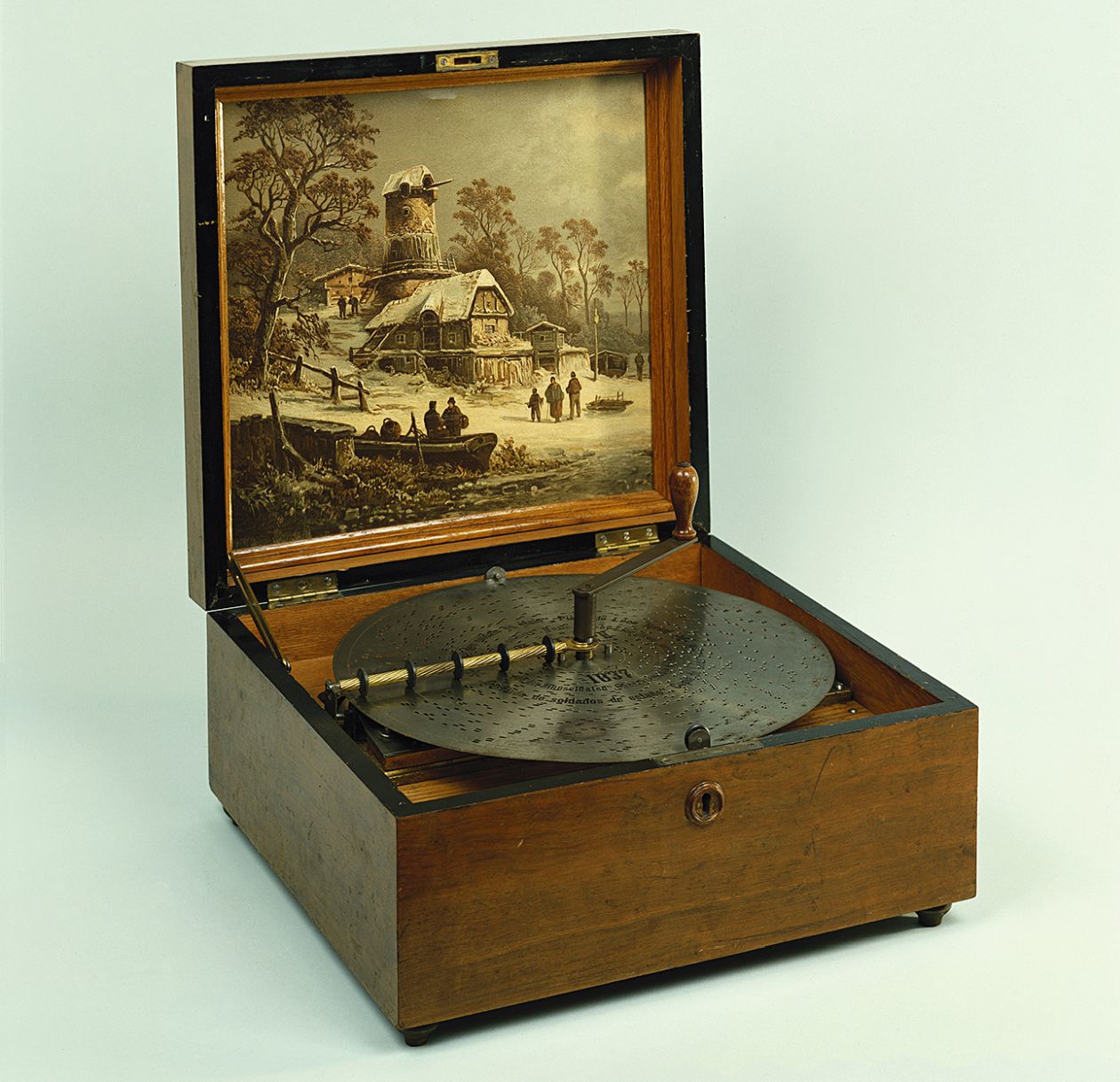
With their pins and holes for storing information, mechanical musical instruments were the true forerunners of the digital age.
The principle of mechanical musical instruments is always the same. A mechanically controlled roll, strip, barrel or disc that has pins or holes is used to move levers that perform the same function as a musician's fingers.
Mechanical instruments have been around since the fourteenth century, with the chimes in astronomical clocks being one example. Harp and flute clocks were popular mechanical instruments in the eighteenth century. In the harp clock, a small pianoforte is controlled by a pinned barrel. The base of the magnificent “flute clock” also has a barrel of this kind that “plays” the built-in organ.
At the Musikinstrumenten-Museum, visitors can see and hear a variety of mechanical instruments, from the music box to the orchestrion.
Electronic musical instruments
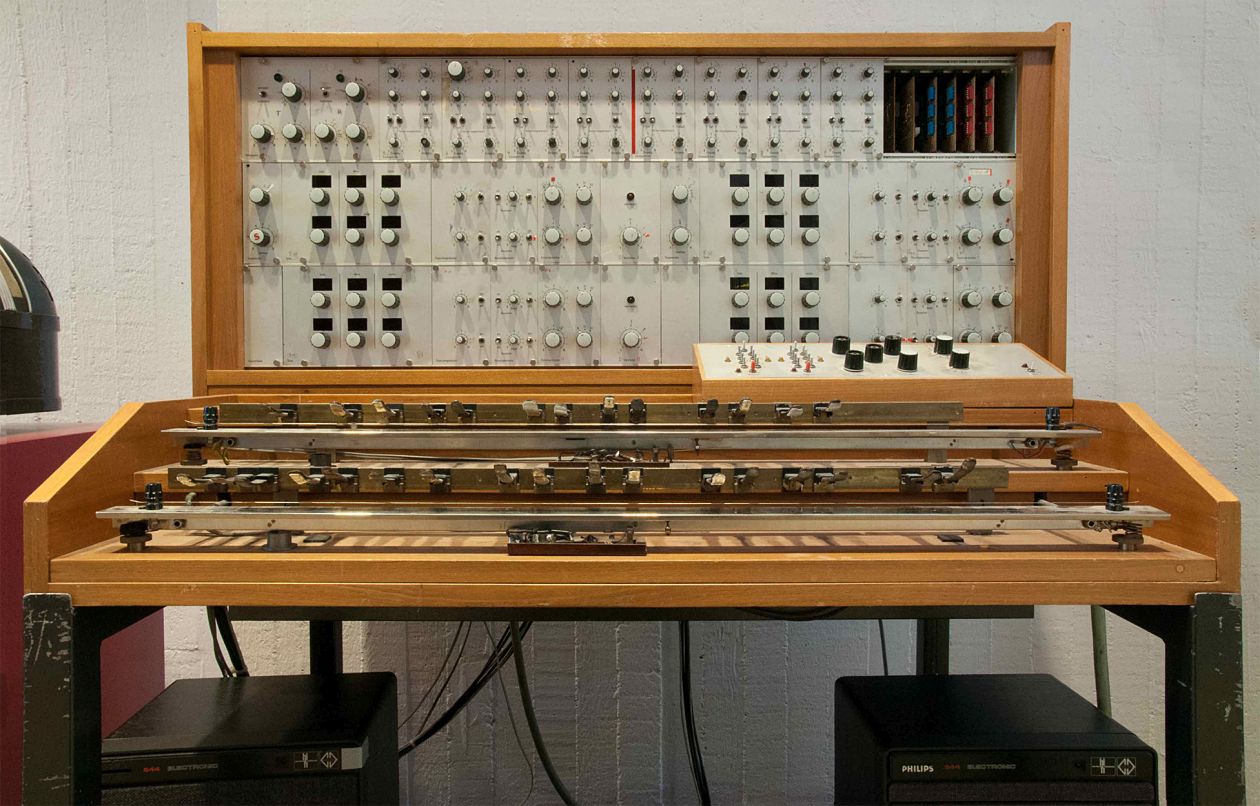
Instruments like the Hammond organ or Trautonium immediately bring to mind film music or jazz. Electronic instruments are pervasive in popular music and are now an integral part of our lives.
Strictly speaking, the museum's electronic musical instruments are actually electroacoustic instruments. In contrast to purely acoustic instruments, they generate electrical oscillations which are converted to sound via amplifiers and loudspeakers.
In 1930, Friedrich Trautwein and Paul Hindemith introduced the Trautonium, an electronic instrument in which a neon lamp generator was used to produce a sound very rich in overtones. Players controlled the pitch by pressing a wire on the manual with their fingertips. Oskar Sala continued to work on the Trautonium until about 1956, and it was popularized largely through his film music. The best-known example of this is probably the synthesized bird sounds in Alfred Hitchcock’s thriller “The Birds.” Because of the instrument's popularity, the company Telefunken produced a small series of 40 Trautoniums in the 1930s.
In 1928, around the time the Trautonium was introduced, Bruno Helberger and Peter Lertes created an instrument called the Hellertion. After World War II, Hellberger developed an improved version that was known as the Heliophon. It is played using two keyboards. Other early electronic instruments included the Combichord, Clavioline and Multimonica. These were monophonic devices often used by dance bands as accompaniment, along with the piano and accordion. They therefore had only a small keyboard. Later on, in the 1950s, efforts to generate sound using electroacoustic techniques tended to focus on the organ. Like the traditional organ, electronic organs have multiple manuals. They also often have a pedalboard and rockers or buttons to activate different registers.
A well-known example of an electronic organ is the Hammond organ. It was originally conceived as a substitute for the traditional organ but was never widely adopted for that purpose. It was, however, very well received by gospel groups, and by that route found its way to blues and rhythm and blues bands. To this day, it is an important element of jazz and rock music, although the sound is likely simulated, as the original Hammond organ is no longer manufactured. The synthesizer was developed in 1965, building on the tradition of the Trautonium and the Heliophon. Today, this type of electronic sound synthesis is a pillar of rock and pop music and thus large parts of the music industry.

